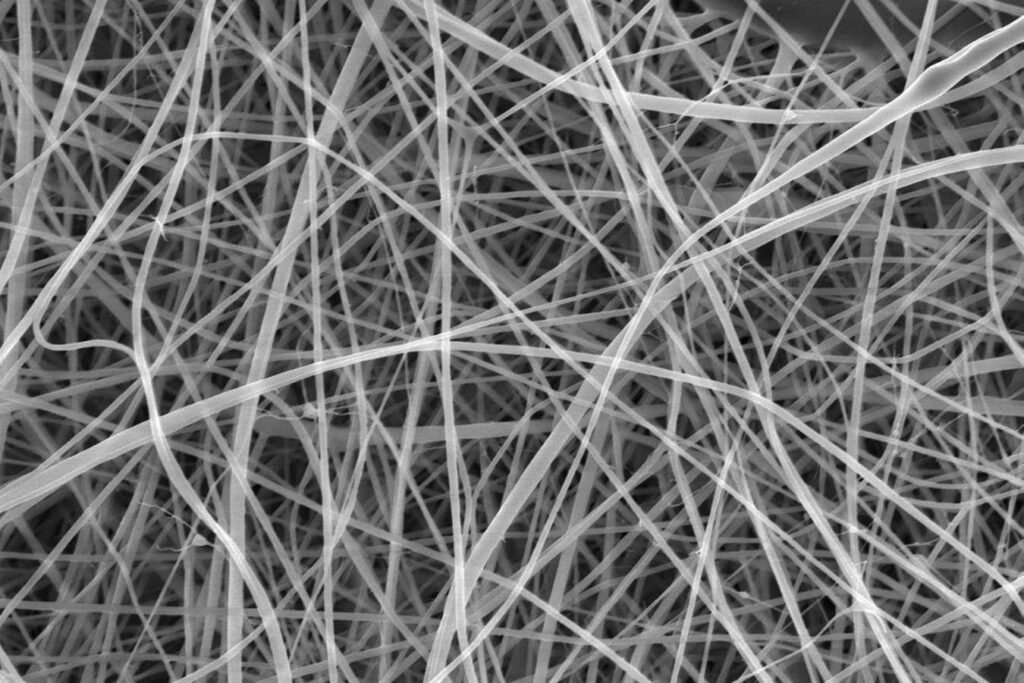
Pasta nanofibers
Beatrice Britton/Adam Clancy
Scientists have created the world’s thinnest spaghetti strands, 200 times thinner than a human hair. These will challenge even the fastest cook, overcooking in a fraction of a second, but may have applications in medicine and industry.
Adam Clancy At University College London and his colleagues they created a mixture of flour and formic acid, a common food preservative. They used electrical forces to push this mixture through a hollow needle, which ejected nanofibers 372 nanometers in diameter, too small to see with the naked eye.
Such slender fibers are created from extracted starch the plants before, but Clancy says that this process is harmful to the environment. “It’s: soak it in corrosive materials, dissolve it in water, wash it, throw it in the river,” he says.

Individual threads can be twisted into a pasta net
Beatrice Britton/Adam Clancy
But with a flour blend that doesn’t happen: You grind the grains to make flour and mix it with formic acid, he says.
The resulting “nanopaste” can be spun into a small mat of about 2 centimeters. While it’s not intended as food, Clancy says it should be safe to eat, but is reticent to talk about having tried it. “It’s ethically questionable to talk about scientific self-experimentation,” he says. “But hypothetically, you might expect it to be chewier than you might expect.”
Clancy believes that other natural raw materials could be even more useful, that dried potatoes – which have a higher starch and lower fiber content than the flour mixture – could create better nanofibres.
This material can be woven bandages that allow air and moisture to pass freely, but keep bacteria out, says Clancy. Nanofibers are also used a tissue growth scaffold on, and are being researched for use in filtration systems and the batteries.
Topics:

